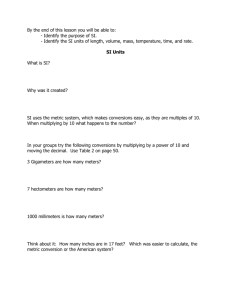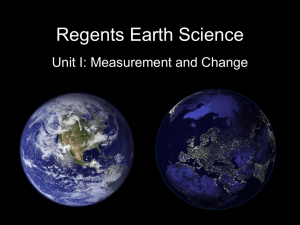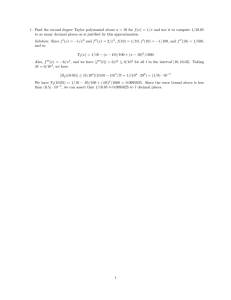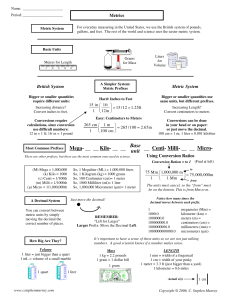Metric Conversions
advertisement
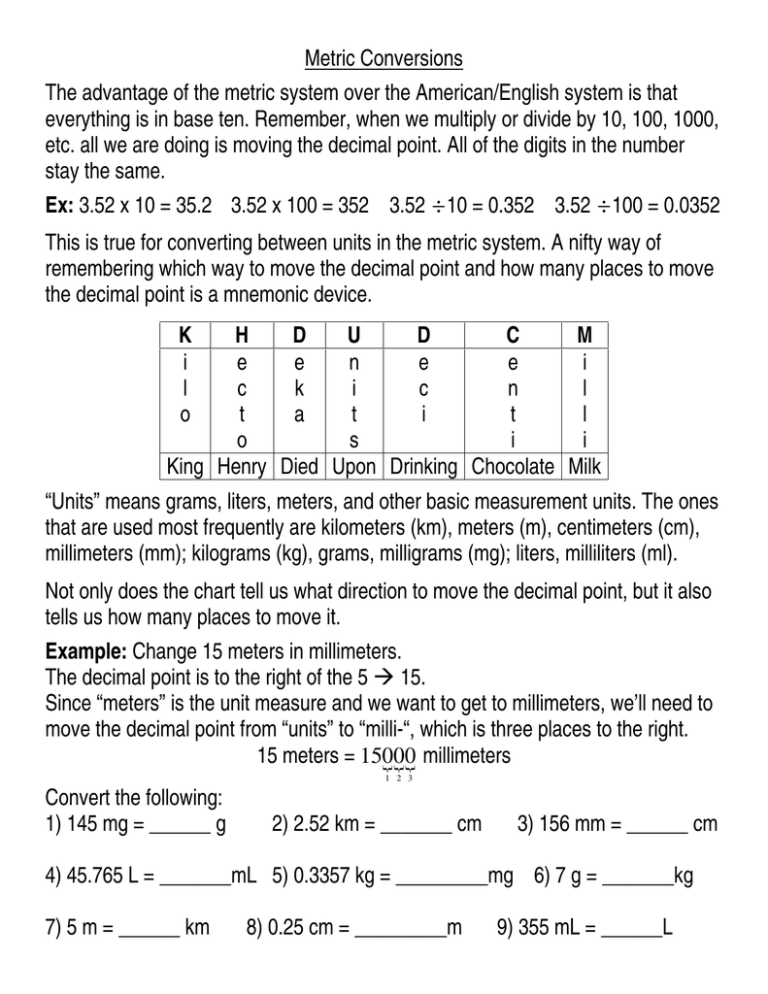
Metric Conversions The advantage of the metric system over the American/English system is that everything is in base ten. Remember, when we multiply or divide by 10, 100, 1000, etc. all we are doing is moving the decimal point. All of the digits in the number stay the same. Ex: 3.52 x 10 = 35.2 3.52 x 100 = 352 3.52 ÷10 = 0.352 3.52 ÷100 = 0.0352 This is true for converting between units in the metric system. A nifty way of remembering which way to move the decimal point and how many places to move the decimal point is a mnemonic device. K i l o H D U D C M e e n e e i c k i c n l t a t i t l o s i i King Henry Died Upon Drinking Chocolate Milk “Units” means grams, liters, meters, and other basic measurement units. The ones that are used most frequently are kilometers (km), meters (m), centimeters (cm), millimeters (mm); kilograms (kg), grams, milligrams (mg); liters, milliliters (ml). Not only does the chart tell us what direction to move the decimal point, but it also tells us how many places to move it. Example: Change 15 meters in millimeters. The decimal point is to the right of the 5 Æ 15. Since “meters” is the unit measure and we want to get to millimeters, we’ll need to move the decimal point from “units” to “milli-“, which is three places to the right. 15 meters = 150,,, 00 millimeters 1 2 3 Convert the following: 1) 145 mg = ______ g 2) 2.52 km = _______ cm 3) 156 mm = ______ cm 4) 45.765 L = _______mL 5) 0.3357 kg = _________mg 6) 7 g = _______kg 7) 5 m = ______ km 8) 0.25 cm = _________m 9) 355 mL = ______L
